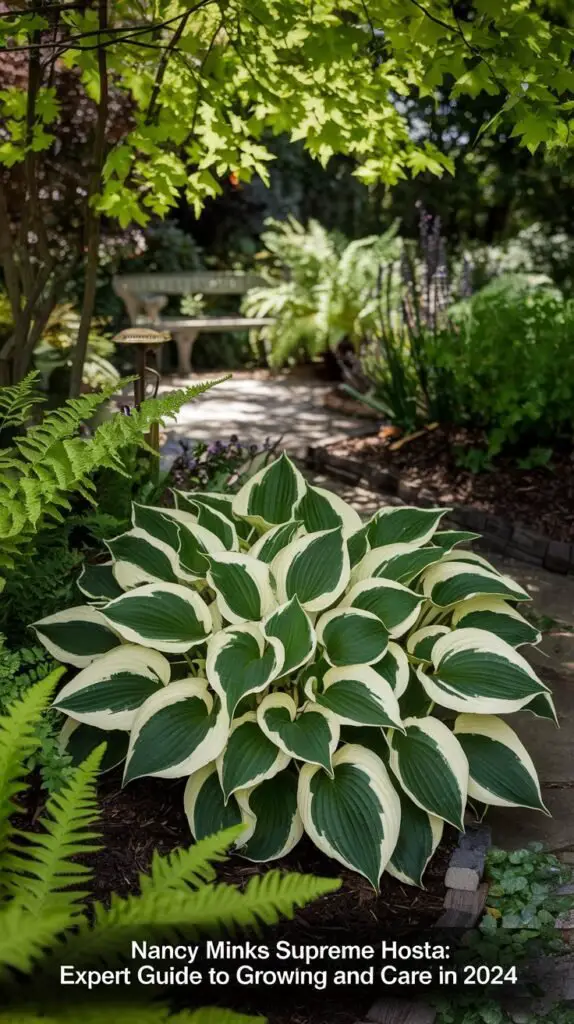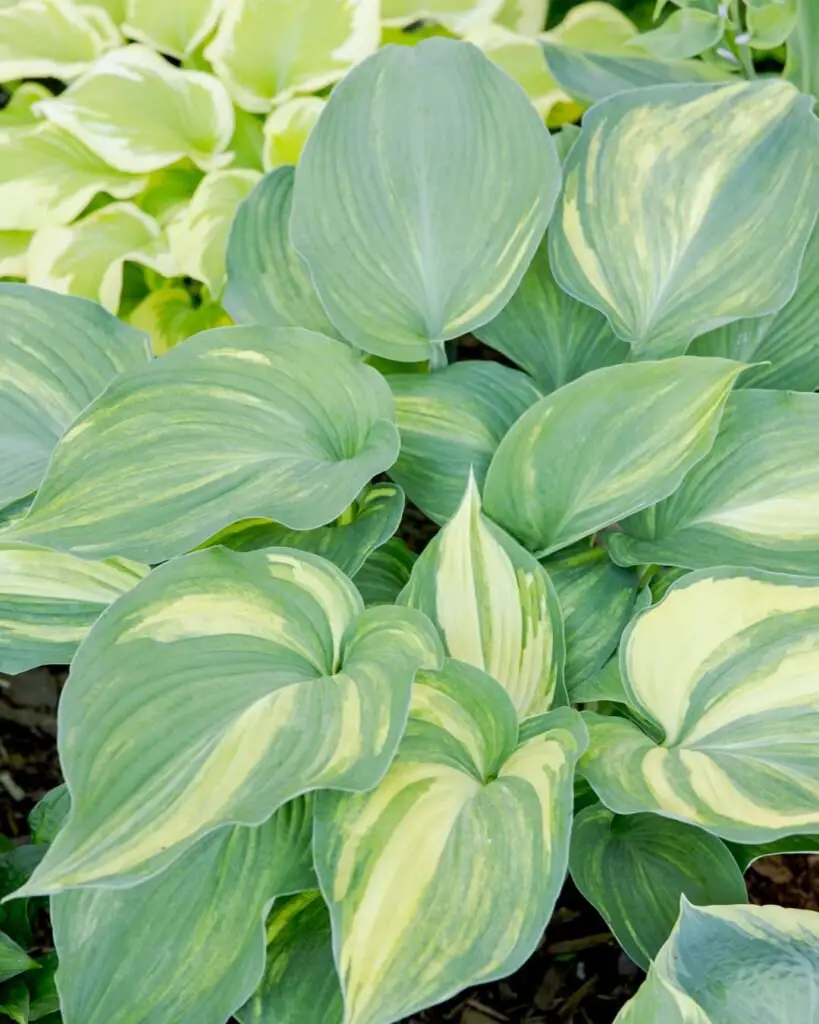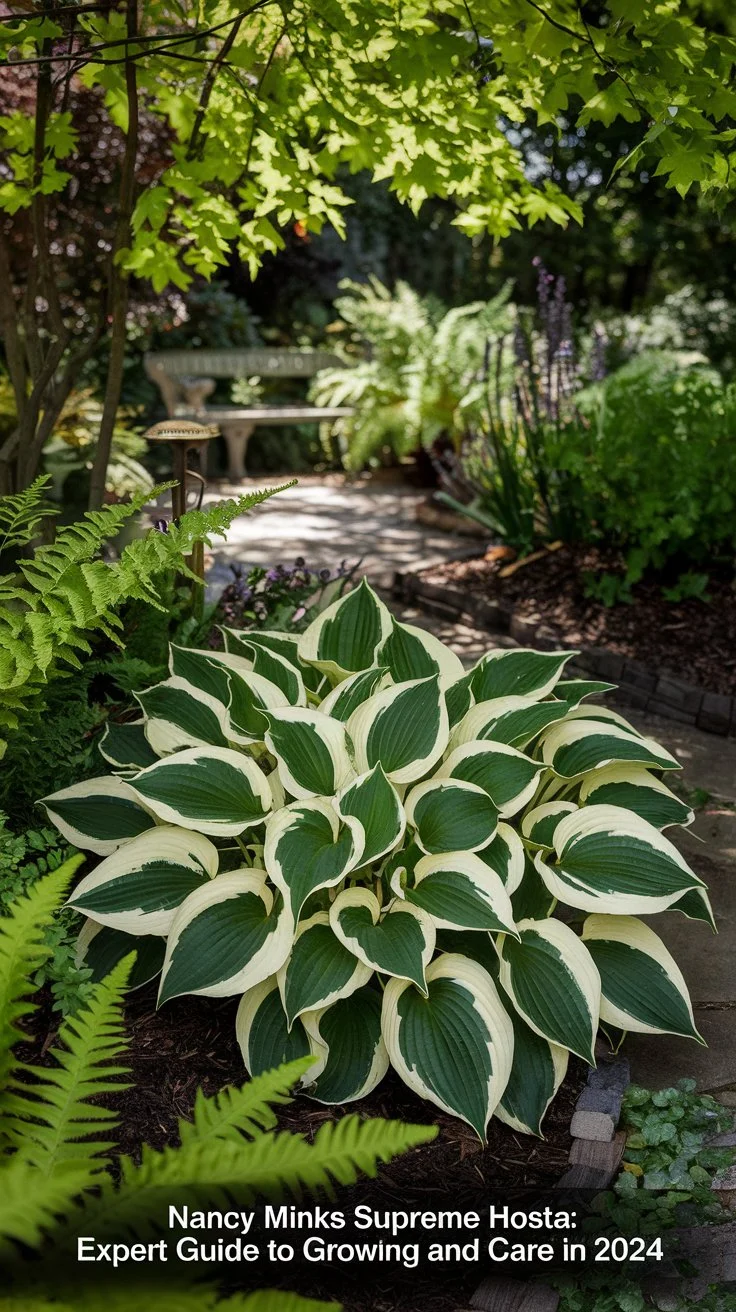Discover the beauty of the Nancy Minks Supreme Hosta. Learn how to grow and care for this shade-loving plant in your USA garden.

Have you ever dreamed of a lush, green garden that thrives even in the shadiest spots? Let me introduce you to the Nancy Minks Supreme Hosta, a plant that’s become one of my absolute favorites over my 10 years of gardening. I’m Ashley Scott, and through my experience nurturing plants at USA Garden Hub, I’ve learned that this hosta variety is a standout for its beauty and resilience. In this guide, I’ll walk you through everything you need to know about the Nancy Minks Supreme Hosta—what it is, how to grow it, and why it’s perfect for your garden in the USA. Whether you’re a beginner or a seasoned gardener, this shade-loving gem is sure to impress.
What is Nancy Minks Supreme Hosta?

The Nancy Minks Supreme Hosta is a gorgeous variety of hosta, famous for its eye-catching foliage. Picture this: dark green margins framing a creamy-white to white streaked center. It’s like nature painted a masterpiece! This plant grows to about 22 inches tall and 50 inches wide when mature, making it a bold addition to any garden. I’ve planted it in my own backyard, and it never fails to draw compliments from visitors.
Hostas are often called the “queen of the shade,” and the Nancy Minks Supreme Hosta earns that title with its ability to brighten up dim corners. It’s hardy in USDA zones 3-9, so whether you’re gardening in chilly Minnesota or sunny Georgia, this plant can thrive. You might see some folks searching for nancy as host or nancyminks supreme * hosta, but rest assured, we’re talking about the same stunning plant here. And no, it’s not related to honeysuckle mistletoe—that’s a common mix-up!
Growing Conditions for Nancy Minks Supreme Hosta
To help your Nancy Minks Supreme Hosta flourish, you need to get the growing conditions just right. Here’s what I’ve learned works best:
Light Requirements
Hostas love shade or partial shade. The Nancy Minks Supreme Hosta is no exception—it thrives under trees or on the north side of your house where it gets filtered light. It can handle a bit of morning sun, but too much afternoon heat will scorch those beautiful leaves. I once made the mistake of planting a hosta in full sun, and let’s just say it wasn’t happy!
Soil Preferences
This hosta prefers moist, well-drained soil packed with organic matter. I always mix in some compost before planting to give it a nutrient boost. Aim for a slightly acidic to neutral pH (around 6.0 to 7.0). Good drainage is key—soggy roots are a hosta’s worst enemy.
Watering Needs
Keep the soil consistently moist but not waterlogged. I water mine deeply once or twice a week, depending on the weather. In hotter parts of the USA, you might need to water more often. A trick I picked up is to water in the morning so the leaves dry out by evening, reducing the risk of fungal issues.
How to Care for Your Nancy Minks Supreme Hosta
One of the best things about the Nancy Minks Supreme Hosta is how easy it is to care for. With a little attention, it’ll reward you with years of beauty. Here’s my go-to care routine:
Fertilizing
In spring, when new shoots pop up, I give my hosta a dose of balanced, slow-release fertilizer (like 10-10-10). It fuels those lush leaves all season long. You can also use organic options like compost tea—something I’ve tried with great results.
Dividing
Every 3-5 years, I divide my hostas to keep them healthy and growing strong. It’s also a great way to get more plants for free! Spring or early fall is the best time to do this. I dig up the clump, split it with a sharp spade, and replant the sections—easy peasy.
Mulching
A layer of organic mulch (think shredded bark or leaf mold) works wonders. It keeps the soil moist, blocks weeds, and looks tidy. I add about 2-3 inches around my Nancy Minks Supreme Hosta each spring, and it makes a huge difference during summer heat.
Common Problems and Solutions
Even though hostas are tough, they can run into a few hiccups. Here’s how I handle the most common issues:
Slugs and Snails
These little critters adore hostas and can chew holes in the leaves overnight. I sprinkle slug bait around my plants or set up beer traps—slugs can’t resist a sip! You could also invite natural helpers like toads into your garden. Learn more about pest control from Cornell University.
Fungal Diseases
In humid climates, fungal spots can show up on the leaves. I prevent this by ensuring good air circulation and watering at the base, not overhead. If I spot trouble, I trim off the affected leaves and use a fungicide. Check out tips from the Missouri Botanical Garden.
Why Choose Nancy Minks Supreme Hosta?
So, why pick the Nancy Minks Supreme Hosta over other plants? Here’s what makes it a winner in my book:
- Stunning Looks: Those variegated leaves add a pop of color and texture to shady spots.
- Tough as Nails: It’s hardy in zones 3-9, perfect for gardeners across the nancy minks supreme hosta in USA.
- Low Fuss: Once it’s settled, it doesn’t demand much—just water and a little love.
- Design Friendly: Pair it with ferns or astilbes for a dreamy shade garden. I’ve got mine next to a stone path, and it’s a showstopper.
The first time I planted a Nancy Minks Supreme Hosta, I was blown away by how fast it transformed my shady backyard. It’s like it was made to fill in those tricky spots where nothing else would grow.
Frequently Asked Questions (FAQ)
Got questions about the Nancy Minks Supreme Hosta? I’ve got answers!
How big does Nancy Minks Supreme Hosta get?
It grows to about 22 inches tall and 50 inches wide—a nice size for filling out a garden bed.
Can I grow it in full sun?
Not really. It prefers shade or partial shade. Too much sun can burn the leaves, so stick to shadier spots.
When is the best time to plant hostas?
Plant in spring or early fall when the weather’s cool. This gives the roots time to settle before summer heat or winter cold hits.
Where can I buy Nancy Minks Supreme Hosta?
Look for it at local nurseries or online plant retailers. For more options, check out the American Hosta Society or ask your nearby garden center about nancy minks supreme hosta availability.
Conclusion
The Nancy Minks Supreme Hosta is a must-have for anyone wanting to bring life to their shade garden. Its striking leaves, easy care, and adaptability make it a top pick for gardeners across the USA. I’ve loved watching mine grow over the years, and I’m sure you’ll feel the same.
Ready to give it a try? Explore more shade gardening tips on USA Garden Hub or dive into our guide on top shade-loving plants. Happy gardening!




